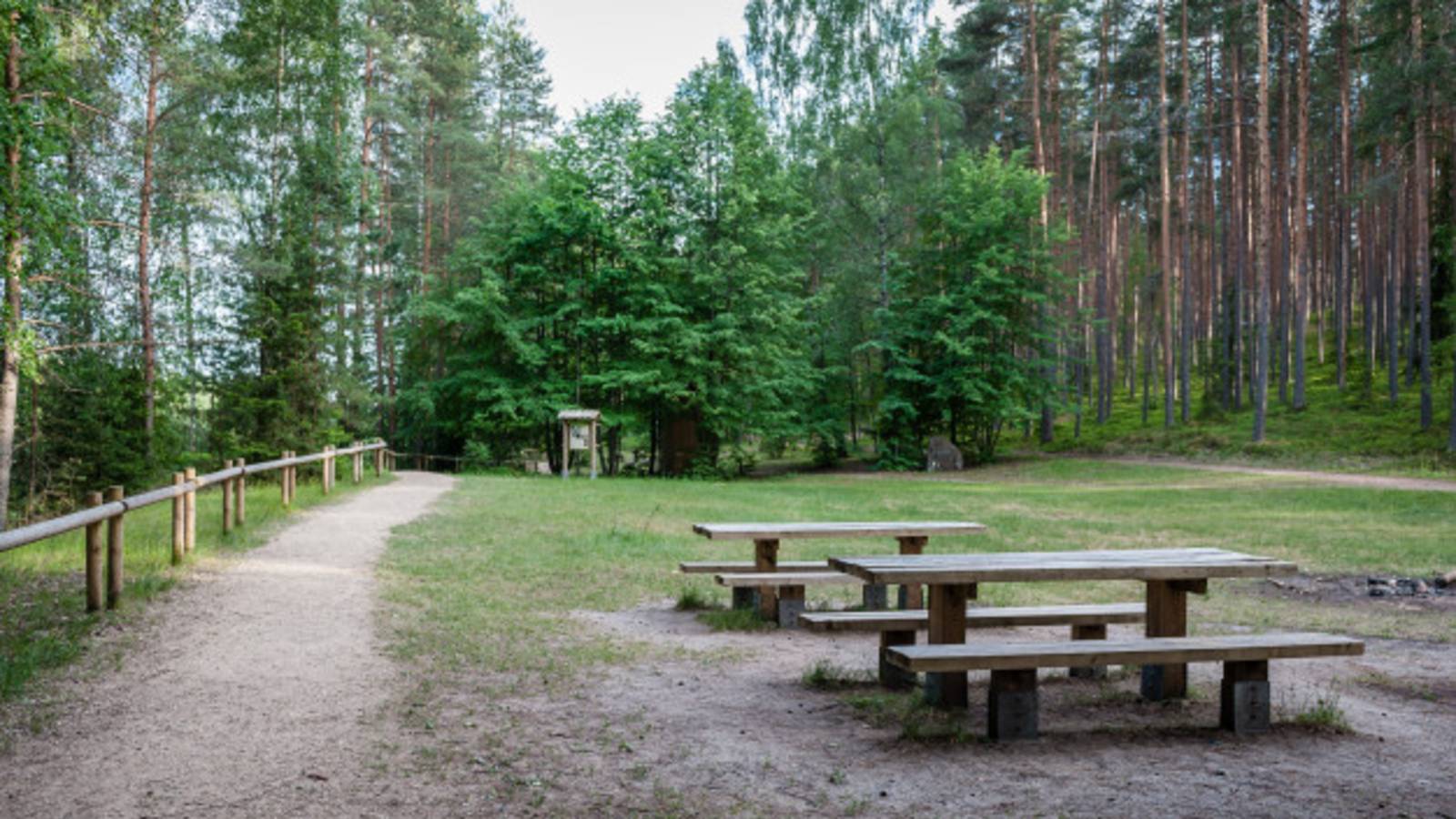As defined by Britannica.com, A National park is an area set aside by a national government for the preservation of the natural environment. A national park may be set aside for purposes of public recreation and enjoyment or because of its historical or scientific interest. Most of the landscapes and their accompanying plants and animals in a national park are kept in their natural state.
It is generally thought that the concept of a park or nature reserve under state ownership originated in the United States in 1870 and that the world’s first such park was Yellowstone National Park in Wyoming, however, some naturalists and others have argued that there is evidence that indicates that the creation of Yellowstone was predated by the creation of Bogd Khan Mountain National Park in Mongolia, which may date from as early as 1778. All over the world, nature reserves had been maintained for centuries to protect hunting grounds for use by kings and nobles.
Following Yellowstone, Australia wasn’t too far behind with what is now known as Royal National Park in New South Wales becoming the world’s second National Park and the first for Australia in 1879. Australia now has more than 500 National Parks covering more than a million hectares. That sounds a lot but it’s only approximately 3-4% of the country.
Apart from national parks which are considered to be the ‘Cream of the Crop’ you will also come across other types of natural sanctuaries. These include:
-
State Parks - In NSW, State Parks offer locations for fun and affordable activities such as picnics, barbecues, camping, swimming and water sports and bush walks in serene and tranquil locations, which are maintained and cared for by the Lands Department
-
State Conservation Areas - In NSW, Community Conservation areas allow for improved conservation efforts, while providing for the sustainable use of natural resources. In addition to National Parks, the NSW Office of Environment and Heritage manages two additional types of conservation area including those reserved as Aboriginal areas or State Conservation areas
-
State Forests - State Forests are just that. At some point they will be logged but in the meantime there are often good recreation options available in many areas. Just don’t grow too attached to them as their main purpose is the return of revenue from forestry.
The following is a list of links that take you to the various states websites, listing national parks in each state. Some of these links also contain State Parks and Conservation Areas;
-
Commonwealth national parks.
-
ACT parks and reserves.
-
NSW national parks.
-
NT find a park.
-
QLD parks.
-
SA find a park.
-
TAS parks and wildlife.
The national parks of various countries differ greatly in their effectiveness in protecting their resources. Some governments provide their park systems with large enough budgets to make possible strict enforcement of regulations, others do not.
Most national parks have a built-in paradox: Although they often depend for their existence on tourism stimulated by public interest in nature, the preservation of their wildlife depends on its not being molested. This paradox is usually resolved by allowing visitors to travel only within limited areas in the park. This lets them see the park while minimising contact with the wildlife (flora and fauna). This explains the existence and enforcement of regulations, fees, and permits etc.
In addition to Australian mainland National Parks, there are vast Protected Marine Areas located around Australia and her islands. Watch the video below to learn more about your marine parks.
Marine Parks
Many people use the marine environment, either for recreational activities including boating, diving and fishing, or for commercial activities such as tourism, charter fishing and commercial fishing.
Management Plans for Australian Marine Parks require that certain activities need an authorisation. Authorising activities is one way the Director of National Parks seeks to achieve management plan objectives: that is, to protect and conserve biodiversity and marine park values, and providing for ecologically sustainable use.
For information refer to Parks Australia's site on our marine parks.
Australian National Parks are mostly managed independently by each state authority.
National park management policies cover many issues and situations. These policies are designed to protect native plants, animals and ecosystems while meeting the needs of business operators and visitors.
The permit system is in place nationally to help regulate activity. This is a system through which industry and the public can share in the responsibilities of managing and protecting the park. Permits may be issued subject to conditions.
Permits enable park managers to:
-
Maximise the safety of visitors.
-
Encourage responsible behaviour.
-
Ensure that commercial and other users are accountable for their actions.
-
Separate potentially conflicting activities.
-
Manage impacts on high-use and sensitive areas.
-
Monitor activities that could degrade biodiversity, heritage and other values.
-
Collect data for planning and management.
Permits in National parks may be required for the following activities:
-
Camping in a park.
-
Use of an area or waterways for an organised event.
-
Special activities (cave tours, rock climbing, white water rafting).
-
Driving a vehicle.
-
Driving a non-standard vehicle.
-
Landing aircraft.
-
Operating recreational aircraft.
-
Using a generator.
-
Scientific or educational research.
-
Taking an animal in, such as a guide dog.
-
Taking flowers or plants.
-
Any commercial activities.
Entrance fees vary from state to state and in some cases between parks within a state. Passes which cover most parks in that state for a year, or for a shorter holiday, can be purchased. Discounts for park passes or daily entry fees may apply for holders of State Seniors Cards or other Concession Cards.
Park passes must be fixed to your vehicle windscreen (your vehicle must be a registered vehicle).
To conduct business or fundraising activities in a national park or other protected areas, you must apply for a Commercial Activity Permit (CAP) or similar. For example, refer to Queensland state government commercial-activity-permit requirements.
Some parks may not require a fee or permit for short stay visitors. It is important to research and plan for requirements for your particular activity.
Remember that you need a camping permit to camp overnight in a national park and most campsites must be booked and paid in advance (for school holidays, popular sites must be booked several months in advance). For detailed information about camping in parks, and how to book a campsite, visit the national parks website in your state.
To apply for a permit or licence to conduct activities in a Commonwealth of Australia reserve, refer to permits and licence applications. For permit requirements for your state, refer to the park website.

Permits for protected marine parks:
For information refer to Australian marine parks permits and licence applications.
Permits on land under the control of traditional owners:
In Australia, we acknowledge Aboriginal and Torres Strait Islander peoples as the traditional custodians of our land.
Indigenous Protected Areas are areas of Indigenous community-owned and managed lands protected in Australia. They form the largest component of the National Reserve System (NRS) covering more than 66 million hectares, over 44 per cent of the NRS and over 8 per cent of Australia.
Aboriginal land is private land and permission is required to visit. The permit system is simply about asking before visiting. It allows regulated access to Aboriginal land for visitors, workers, and researchers and for special projects. To spend time in Aboriginal lands for other or commercial reasons such as mining exploration or research, a different application needs to be submitted.
Permits are usually free and rarely refused. But Permit fees may apply to enter some Aboriginal communities.
More specific permits may be needed to visit other Aboriginal areas which are generally not on the main tourist routes and application processing may take some weeks.
Entry permits for communities are only required if you are staying in the community as a visitor or non-government worker. Authorised Government workers (and contractors to the Government) do not require permits for communities but do need an entry permit for work on Aboriginal land outside communities (including outstations).
Some roads to communities are not public roads and therefore require a transit permit. In regard to transit permits used by tourists when taking roads passing through specific Aboriginal lands where permits are required; the permit will state the conditions of entry. Generally, camping is only permitted in designated areas, and the permit is for transit by road with no diversion, other than to purchase fuel and or supplies at communities along the route.
Unauthorised entry to Aboriginal land can result in a fine.
The Indigenous Protected Areas program is administered by the National Indigenous Australians Agency in partnership with the Department of Agriculture, Water and the Environment. For more information refer to indigenous protected areas.
For information on Indigenous engagement, case-studies refer to indigenous landholders.
Australia can easily boast having some of the nicest campgrounds in the world that fit all budgets.
State and local Government legislation both have a role in the regulation of camping and camping grounds. Compliance with the regulatory requirements for camping in that legislation promotes camping that is safe, enjoyable, equitable and sustainable.
Restrictions on campsite operations:
Where can you camp?
What are some of the other common considerations?
You can camp in natural surroundings in many national parks, conservation parks, forests and reserves throughout Australia.
Formal camping areas are provided at most parks and forests where camping is allowed. The facilities provided at each camping area differ so make sure you read the detailed camping information provided for each individual park or forest. Individual park pages provide you with important pre-visit information and park alerts keep you up-to-date with the latest information on access, closures and conditions.
Bush camping (with few or no facilities or primitive camping grounds) is allowed in some parks. Bush campers must camp well away from streams, lakes, walking tracks and picnic areas.
Camping in a roadside rest area may be permitted unless a ‘no camping’ or ‘no overnight stays’ sign has been placed there by a council or a state department such roads and traffic authority in NSW.
-
Short walks and hiking - Both have dedicated walking tracks. Hikes take more than 8 hours to complete and many provide overnight camping along the route. Walks can take from 30 mins to 4 hrs.
-
Disability facilities - These will be limited to usually wheelchair access (sometimes with assistance) to toilets, picnic tables, tracks or lookouts. Occasionally other facilities are provided. It is recommended that you seek further information before visiting the park.
-
4WD access - 4WD required to access some sections of some parks. Conventional vehicle access may be possible in dry weather.
-
Dogs - Usually not allowed, although some parks may allow dogs on leashes.
-
Showers - If the facility is provided, may be cold or hot and may require coins to operate.
-
Water - May require treating before use (boiling, filtering etc.)
-
Barbecues - If provided, may be gas, electric or wood, and may require coins to operate.
-
Campfires - Where permitted may have local requirements regarding type of timber used, location of fire, method of lighting and extinguishing etc.
-
Smoking - Prohibited in National Parks.
The rules and regulations are reasonably consistent thought Australia’s National Parks.
Some 0f the more standardised rules include:
-
No dogs (state parks and reserves are often less stringent).
-
Fires are banned in some parks (parts of parks) year-round, and in most areas when there is a total fire ban enforced.
-
Many National Parks will have an entry fee and also a camping fee which will require an online permit. These fees are usually fairly minimal but allow for the upkeep of the parks and to manage visitation.
-
Look but don’t touch. This includes not feeding wildlife, collecting plants, or collecting firewood.
-
All the plants and animals in the park are protected (with the exception of feral animal and weed species).
-
Leave the park as you find it.
-
Pack it in, pack it out. Refers to the disposal of waste in an appropriate manner. Essentially taking fewer supplies that will require rubbish disposal and ensuring that everything that is brought in is also taken away with you.
-
If you need to go to the toilet away from provided facilities it should be at least 100 metres away from water supplies, campsites and trails.
There will often be local area based rules you will need to check before using our parks and some of these include:
-
While many parks allow campfires, the preference is for fuel stoves at camp.
-
No fishing in designated waterways.
-
No access to certain areas due to bird nesting season, or rehabilitating threatened species.

Restrictions On The Use Of Open Fires And Related Activities:
-
Campgrounds - The rules around campfires vary by the campground. To find out whether a fire is allowed in the park you're camping in, check the website or contact the local park office. Some campgrounds provide wood barbecue facilities. There are rules for using these facilities.
-
Beaches - In general, fires are not permitted on beaches within national parks. This is usually regulated via signs or alert notices parks website.
Providing there is not a total fire ban or park fire ban in place, and there are no signs or other notices, fires may be permitted (its best to check with local area office).
Check for fire bans. Even if campfires are generally allowed, they may be restricted by several types of fire bans.
-
No burn notice - No burn notice days can be declared by the Department managing the park, to prevent air pollution from smoke. Find out if a no-burn notice is in force (check with local area office).
-
Total fire ban - Fire bans may be declared by the state's Rural Fire Service to prevent fires. Find out if a total fire ban is in force (check with local Rural Fire Service).
Park areas are often closed when there is a severe, extreme or catastrophic fire danger rating.
If campfires are allowed and no fire ban is in place, you may light a campfire providing you follow fire-safety precautions:
-
Build a minimum impact fire. Raise the fire off the ground where possible.
-
Use existing or designated fireplaces, keep fire size to a minimum.
-
Where possible use a stove rather than a campfire for cooking.
-
Never leave a fire or stove unattended and always extinguish a fire completely before leaving it unattended.
-
Never use any flammable liquids.
-
Use electric torches in and around tents.
-
Do not light fires in dangerous conditions. Consider the heat, wind and fuel build up around the site. Take particular care during the bushfire season (usually October to March).
Tip: Extinguish a fire by pouring water over the flames and smothering the coals with soil.
Refer to your state's national parks website for more information about fire safety in parks.
You may need to bring your own supply of firewood or an alternative fuel (e.g. gas). Firewood is not supplied in all parks. In some parks, collecting deadfalls of timber to use only in the park may be allowed if firewood is not already provided in an established visitor-use area. However, even where firewood is not supplied, parks staff or signage may forbid collecting firewood in that park. If you have any questions or doubts, contact the local park office.
Tip: It's a good idea to pack a gas or liquid fuel stove for camping trips in national parks where camping is allowed.
Check local regulations and conditions for campfires and stoves, including fire danger ratings, total fire ban days, and local practices for disposing of ash and coals.
Looking for a source of practical camping and hiking related information, refer to www.australianhiker.com.au.

National parks legislation is as follows:
Commonwealth
-
Environment Protection and Biodiversity Conservation Act 1999
-
Environment Protection and Biodiversity Conservation Regulations 2000
NSW
QLD
-
Nature Conservation and Other Legislation Amendment Act 2016
-
Nature Conservation (Protected Areas Management) Regulation 2017
SA
VIC
TAS
NT
WA
The Environment Protection and Biodiversity Conservation Act 1999 (EPBC Act) provides a legal framework to protect and manage nationally and internationally important flora, fauna, ecological communities and heritage places defined in the Act as matters of national environmental significance. Refer to Permits Assessments Licences.
For local council information, refer to fitness industry association, Fitness Australia, compiled council outdoor policies.
Learn about environmental management, your legal obligations and awards to recognise your environmental efforts. Refer to environmental management and your business.

